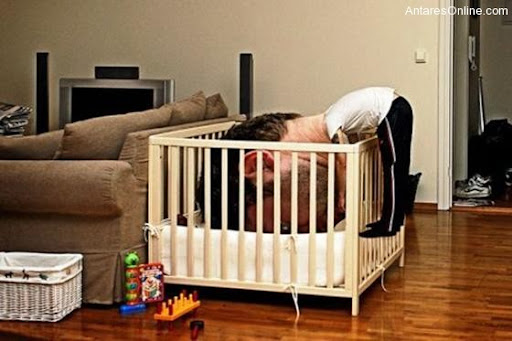Be it tension from working at a computer all day or a stiff feeling when you get up in the morning, almost 96 percent of us experience back pain at some point in our lives, according to Reza Ghorbani, M.D., a board-certified interventional pain management specialist and president and medical director for the Advanced Pain Medicine Institute in the greater Washington, D.C., area.
But diagnosing what your back pain means can be difficult. The back is loaded with nerves, bones, discs, muscles, ligaments, tendons and joints, making it complex and sensitive to pain, he says.
AOL Health asked Ghorbani to explain what different kinds of back pain really mean and when you should see your doctor.
When to See a Doctor
Your first defense against back pain should be over-the-counter medications (pain relievers and anti-inflammatory tablets, creams or patches) and some physical therapy, says Ghorbani.
“This can even resolve a herniated disc within a month, without having injections or surgery,” he says.
If, however, your pain doesn't go away within a month, gets worse or prohibits you from going to work or maintaining most of your daily activities, or if you develop numbness or weakness in your legs, then you should see your doctor right away. He or she will examine you and may prescribe medication or order an MRI or X-ray to further determine what course of treatment should be taken.
And remember, back pain is preventable. Maintaining a healthy weight, exercising and not smoking can all help keep your back in good shape.
Muscle Strain
Dull, aching pain usually signals muscle strain, which is one of the most common causes of back pain, says Ghorbani. It can occur anywhere you have a muscle, which means the neck and upper and lower back are all at risk. Twisting the neck or torso, lifting something, exercising without stretching properly first or working behind a desk or computer are frequent causes of strained or pulled muscles in the back and neck, says Ghorbani.
Degenerative Disc Disease
Dull, aching pain could also signal degenerative disc disease if you're over 30 years of age. As we age, the discs between the vertebrae in our spine naturally start to shrink, placing more pressure on the spine. While not everyone will develop symptoms (genetics can play a role in whether you will), that increased stress can mean dull, aching pain on a daily basis, at the end of the day for some. And, depending on how worn the disc is, the pain can turn from dull and achy to sharp, shooting and burning if the disc tears or becomes herniated. DDD commonly occurs in the low back, but it can affect the upper back or neck, too.
Herniated Disc
A sharp, burning pain is often a sign of a herniated disc. Intense pressure on the discs between the vertebrae can cause them to rupture or herniate. Herniated discs often occur in the lower part of the back and tend to be accompanied by a stinging sensation that travels from the low back to the buttocks, says Ghorbani. Pain from herniation in the upper part of the spine can coincide with discomfort in the front of the thigh, while neck herniation often means headache pain or a burning sensation down the shoulders and arms, too.
Sciatica
A sharp, shooting pain indicates a nerve is being affected, says Ghorbani. The most common cause of sciatica pain is a herniated disc in the low back pressing into the sciatic nerve, causing pain to shoot from the lower back to your buttock and all the way down to your toes. If pain is projecting from the neck to the shoulders, elbows and fingers, you may have a herniated disc in your neck (the term sciatica does not apply to the neck). If you develop numbness or weakness in your legs, see your doctor right away. It could be a sign of nerve damage, says Ghorbani.
Facet Joint Disease
Facet joint disease is a common cause of low back pain, says Ghorbani, although the upper and middle spine is not exempt. When the facet joints between each vertebra in the spine degenerate -- either from arthritis or age -- the joints can become inflamed and painful. The dull, achy symptoms tend to be concentrated in one area (not shooting down a leg), and spasms can occur as an attempt to stabilize the back. Standing or moving around can ease the pain associated with facet joint disease, while sitting or resting for too long can make it worse. If getting out of bed in the morning is difficult because of a stiff back, facet joint disease may be to blame, says Ghorbani.
Failed Back Syndrome
Between 15 and 40 percent of people who have had back surgery have failed back syndrome, a condition that leaves you in either more or the same amount of pain as you were in prior to surgery, says Ghorbani. The pain is usually constant.
“You don't have to stand up, walk or twist. It comes from a malfunction of your nerves,” he says.
Symptoms can be a dull, achy pain that radiates into the hips, buttocks and thighs or sharp stabs of pain in the back and legs.
Spinal Stenosis
Stenosis is a narrowing of one or more areas in the spinal canal, which causes pressure on the spinal cord or nerves. It's often a condition that follows other back disorders such as herniated disc, arthritis or degenerative disc disease, says Ghorbani, and it can cause cramping, pain and numbness in the legs, back, neck, arms or shoulders; a loss of feeling in the extremities and sometimes problems with bladder or bowel function. The symptoms tend to get worse with walking or with activities and somewhat better with rest. If you develop numbness or weakness in your legs, see your doctor right away. By Stephanie Tweito Jacob




No comments:
Post a Comment